The Story of De Underground
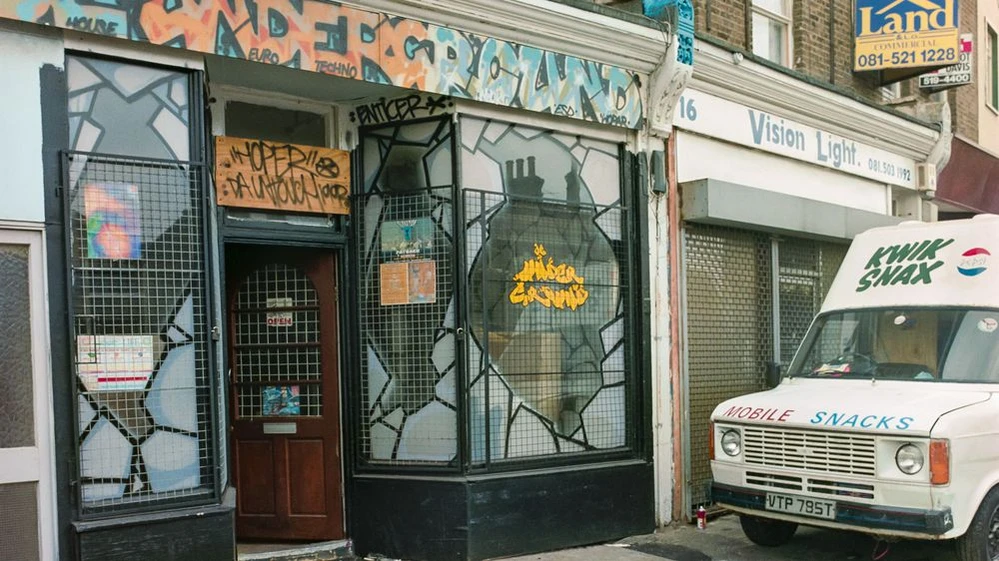
Spotlighting the long gone East London record shop which helped push Jungle music to new heights.
So much more than a record shop and studio, De Underground in Forest Gate, east London, was a focal point for the earliest days of UK hardcore, jungle and drum n bass – and is arguably one of the birthplaces of this music.
Run by Mike De Underground, Cool Hand Flex, Uncle 22 and Randall, it was responsible for classics such as We Are IE, Melody Madness and Six Million Ways To Die. Head there in the early 90s and you’d find Randall DJing, you might see MC Fats sat outside drinking a beer, DJ Chef or Hype hanging out. Artists came from all over; Goldie, Kenny Ken, Zinc, Andy C and many more visited the studio. There’d be people outside, cars would roll up, blasting music. It had a real party vibe.
Crucially though, De Underground Records’ story is one of mainly black working-class young people, and the incredible impact their ingenuity and creative expression had on a national phenomenon, helping to define a new and uniquely British sound and identity.
For the first time, the story of this cornerstone of the nascent UK hardcore, jungle and drum n bass scene has been told by the people that were there. Recorded by Rendezvous Projects (behind the Sweet Harmony project which charts pirate radio in Waltham Forest) for Newham Heritage Month, Crate Digging reveals the important role played by De Underground Records in British music culture, and the influence it had on music today.

Mike De Underground, Randall, Marly Marl, MC Fats, Cool Hand Flex, and Jonny 2 Bad outside De Underground Records, July 1995 – ‘Image courtesy and copyright, Eddie Otchere’
De Underground was born out of a coming-together of the aligned interests of the Aymer brothers: Peter (Cool Hand Flex), Michael (Mike De Underground) and John (owner of Reel 2 Reel Records). Flex and his friend Uncle 22 (Desmond Fearon) had been producing music and DJing on pirate radio stations in nearby Leyton for a few years, and wanted a base where they could record and sell more of their own tracks. Mikey said they should combine a studio with a record shop and the label offices.
As DJ Warlock remembers, “I feel like Mikey was the one who was the business mind behind it. It was a brilliant model really, the whole production chain was there: there’s someone making tunes, someone pressing them up onto white label, then the shop selling them.”
They set up shop at 18 Sebert Road, Forest Gate. Flex and Uncle 22 spent almost all their time in the studio, occasionally working in the record shop; their friend DJ Randall – who they had met at pirate radio station Centreforce – spent his whole time mixing on the shop floor. And it quickly became a big draw.
“I think there was a gap in the market,” says Flex. “It’s just where people wanted to get records that they couldn’t elsewhere. There was a record shop further up the road, but it was more commercial music and that weren’t really appealing to many people. It started off with ones and twos coming in the shop and then eventually every Friday and Saturday it would be really busy in there. To the point where we had to ask a couple guys to help as well. This is how we first met Marly Marl as well. We got him to work in the shop. He was a talented dude. There was a lot of local guys that could make music, who had that skill of putting beats together or actually mixing, and so we always ended up connecting.”
The shop décor reflected its name. Dark and dingy, it very much felt like a literally ‘underground’ place. The windows and interior were graffitied to make it look like a cave, and it had a full scale rave sound system set up in there.
Photographer Eddie Otchere remembers: “Walking into the shop, there was some amazing artwork on the walls painted by a graffiti artist, and it was really insightful art. It was very much a part of the culture, but very much counterculture. It felt like this was a familiar place and a homely place for the culture.”
But there was no way you could miss it. DJ Randall says: “I always remember, we put a tannoy outside the shop because we thought, ‘You know what, with the doors shut, some people might want to hear some music’, just so that people know where we are. Little did we know that this thing was travelling. So, people used to say they would come out of the train station, and they could hear music, and would gravitate to it. So, we got a lot of traffic that way. Until we got letters from the council saying we had to take this tannoy down because a lot of people were complaining.”
Forest Gate resident Anita Bhogal says: “Anyone that lived in that area, when you walked past that part of Woodgrange Road you can hear the booming noise. You’re kind of like, ‘What’s going on over there?’ It’s not the kind of sounds that would come out of Woolworths on a Saturday afternoon, if you know what I mean.”
DJ and producer Marly Marl describes it as like a party: “It was like a buzz, the music was playing, people were chatting and laughing and cracking jokes. And people were buying music. It was just something that was just a buzz at the time. It was like a cross between a party and a community centre.”
If you couldn’t already tell, this was no traditional record shop. And the sales technique was equally unconventional. There were no racks of vinyl on the walls. Just a massive stack of records on the counter.
DJ Chef says many people would just come into the shop and sing the tune they wanted. Or, they would be listening to Randall mixing, and whenever they heard a tune they liked, put up their hand and it would land in front of them. ‘I’m observing this new way of record shopping. You would traditionally go to the shelf, pick up what you want, go to like a listening post, listen to it, and then go and buy it. But here, you were listening to tunes being mixed. And then you’d go, ‘Yeah, that one’. And then this man would just hand you a white label over the counter. And there’d be five people in a row with just these stacks of whites in front of them.’
De Underground was much more than a record shop. The studio was like a hothouse music factory where Uncle 22, A-Sides and Cool Hand Flex made new tunes. Racked with samplers and drum machines, it quickly became a magnet for other producers. Uncle 22 remembers people coming from miles around to see what was going on. Goldie would turn up, Bizzy B, Peshay, Hype, Zinc, Warlock. It was a gathering of likeminded people.
“It was just something that was just a buzz at the time. It was like a cross between a party and a community centre.”



DJ Hype says: “They’d say sometimes, ‘Just bring your sampler down, innit, and plug it in; we can just jam’. So, I might be at home, working on a track, I might be a bit bored or stuck, so I’d unplug my big sampler, drive down there, put my sampler in, plug into theirs, and spend a couple hours jamming in there. It’s like me making a track at an event. You’re getting instant responses. And not only am I getting an instant response, I’m getting it from people that know music, they’re in the same game as me, no matter how good I think it is. If they tell me it’s not all that, I know it ain’t all that.”
By 1995 CDs really took off. And UK Garage blew up. As a shop selling drum n bass and hardcore vinyl, De Underground struggled and eventually closed.
“Things got harder and harder,” remembers Flex. “Rent was going up. I think people were losing interest. Randall was getting more bookings and he was pushed for time. A lot of us weren’t seeing money coming in. So, we just all went our separate ways in the end.”

The rumbling bassline of this shop’s influence still echo today. As Randall puts it: “We were guys that had nothing, all we had was our music and this scene that was starting to evolve. And we were just passionate about that. We didn’t know I’d be still here at this age still out there playing music to the masses.” Hype says: “That little bit of time in my life, I have the best memories. There’s not one bad memory there.”
Chef says: “It was just the best place to meet anyone who was in the scene. And anyone who was about to get involved in the scene. The studio was so important, the record labels were really important. The community was really important.”
Jungle was the precursor to so much of today’s music, from grime to dubstep. So, it’s not hyperbole to say that De Underground leaves a lasting legacy. The fact it was a group of working class black guys from Forest Gate making this seismic impact on British culture needs to be recognised.
MC Rage says: “It gave us identity. Having Randall, Fats and those guys being black and running that shop and having it there and especially that area, just made it fucking cool. It encouraged other people maybe from different cultural backgrounds to get into music.”

MC Fats at De Underground
And Flex says he hopes their legacy will encourage up-and-coming young black talent in the area to chase their dreams. “If they think they can make music and thinking it will make people happy, then I’m all for it. Just do whatever it takes to get your music heard. It’s done loads for me. I’ve been to a lot of countries now that I never would have experienced if I didn’t do the music. So, I’m thankful for that, a lot.”
Uncle 22 says: “We just made music that we liked. Impact wise; people still talk about us. I wouldn’t say it was us that changed the face of music, but we did do something quite original. And now people don’t even class it as American music. It’s our music.”
One moment that really sticks with Cool Hand Flex was when he dropped Melody Madness at Jungle Fever. “I didn’t think much of it because I had just made the tune and I thought ‘Well, OK, this sounds good enough’. So I played it on my set and was surprised by the reaction. I remember having my headphones on and queuing in for the next song, but then hearing the DJs telling me to wheel the track up. That was a time in my life where I thought, ‘You know what, I’m not wasting my time here’. I’m doing something what people love so, yeah, that inspired me to keep going.
“It was an amazing feeling. It was like, being proud of something I’ve achieved. But I’m helping other people too. For the love of the music and stuff like that. I’m just contributing to something bigger than myself. Which was really nice.”
Rendezvous Projects’ Crate Digging: The Influence of De Underground Records is a fascinating and detailed look back at this magnet for creativity. Katherine Green has produced a limited edition free publication, an hour long podcast, and an audio tour of the history of De Underground, featuring in-depth interviews with an incredible array of the key players. It’s been produced for Newham Heritage Month, but this is a story that deserves to be put on record for posterity.
As Eddie Otchere puts it: “Drum n bass, it actually goes back to all working-class culture. All working class music, all working class art deserves the same level as opera does. If not higher. 30 years later, this culture is still with us and the pioneers of this culture are still walking down the streets that they lived on. It’s worth saying how groups of young people can create something that lasts, that can be exported as a culture. It’s hard for a conservative thinker to get their head around that, that that’s how creativity emerges. It doesn’t emerge in a school or universities, it emerges in spaces where creativity flourishes, and that has to be allowed to flourish.”
For more information see www.rendezvousprojects.org.uk and www.newhamheritagemonth.org

Photography Credits:
(outside with food van)
De Underground Records, 21 April 1992
Image courtesy and copyright of Peter Marshall, mylondondiary.co.uk
Reviews by DJ Warlock from Ravescene magazine, 1992-1993


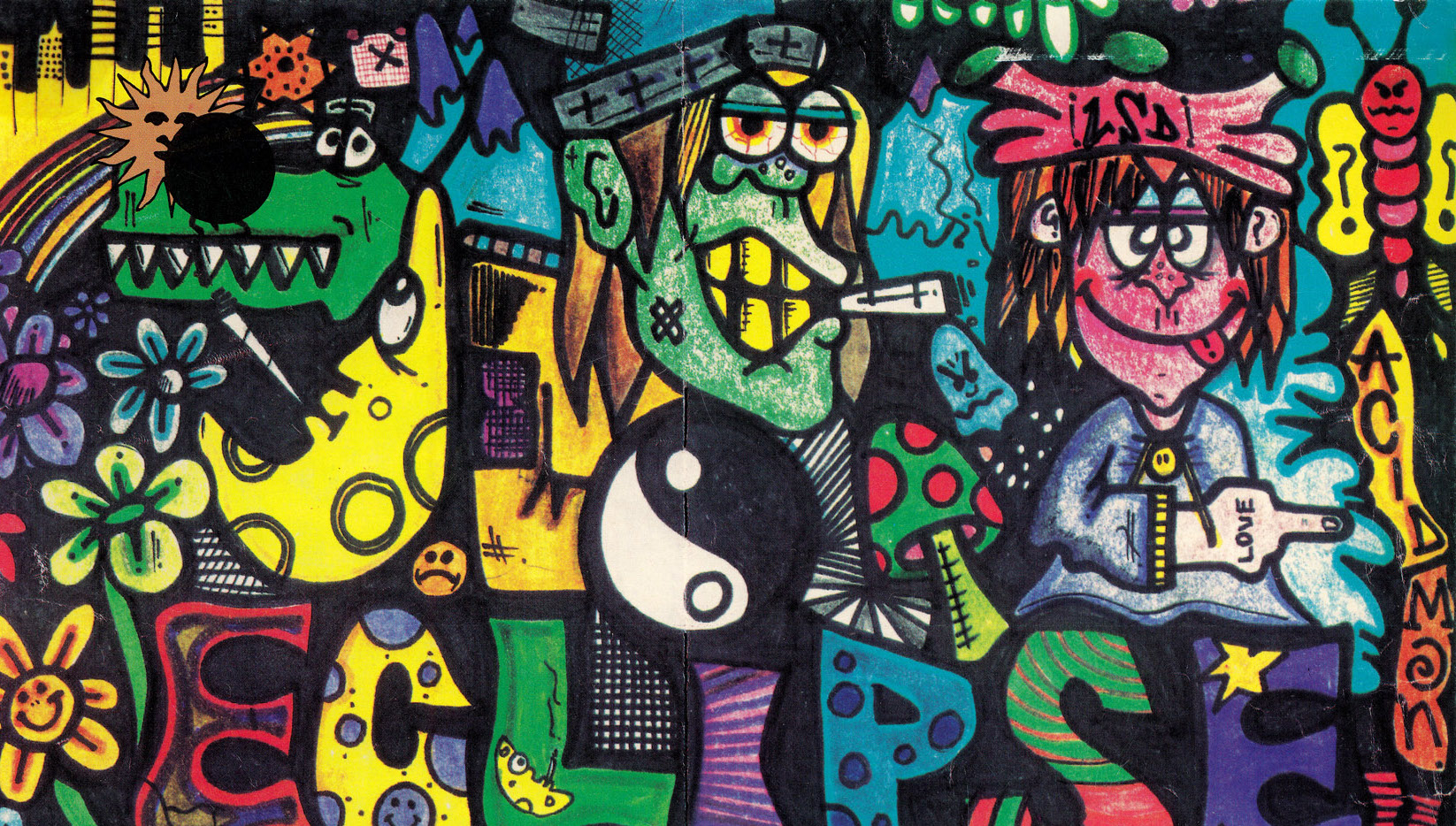
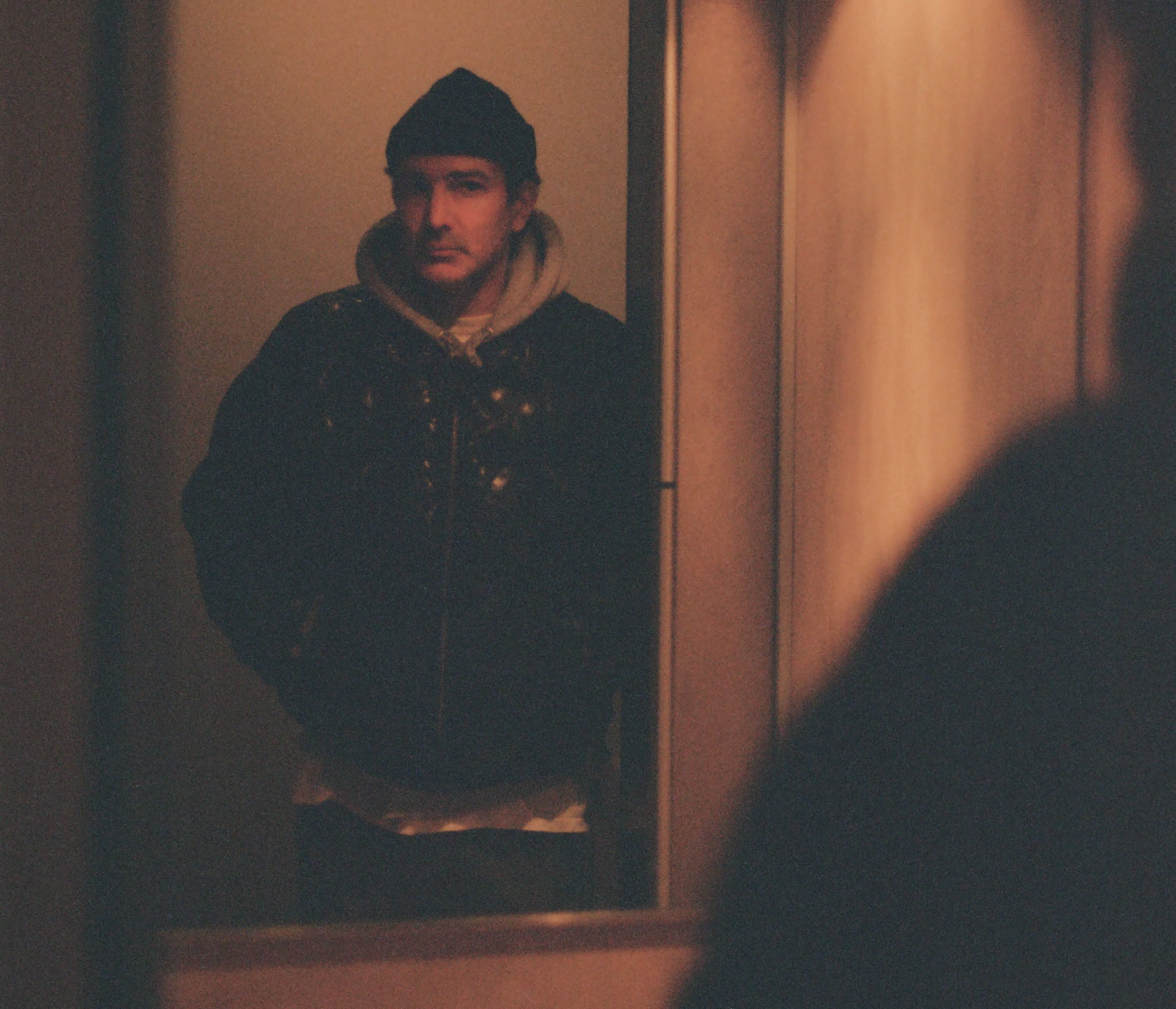
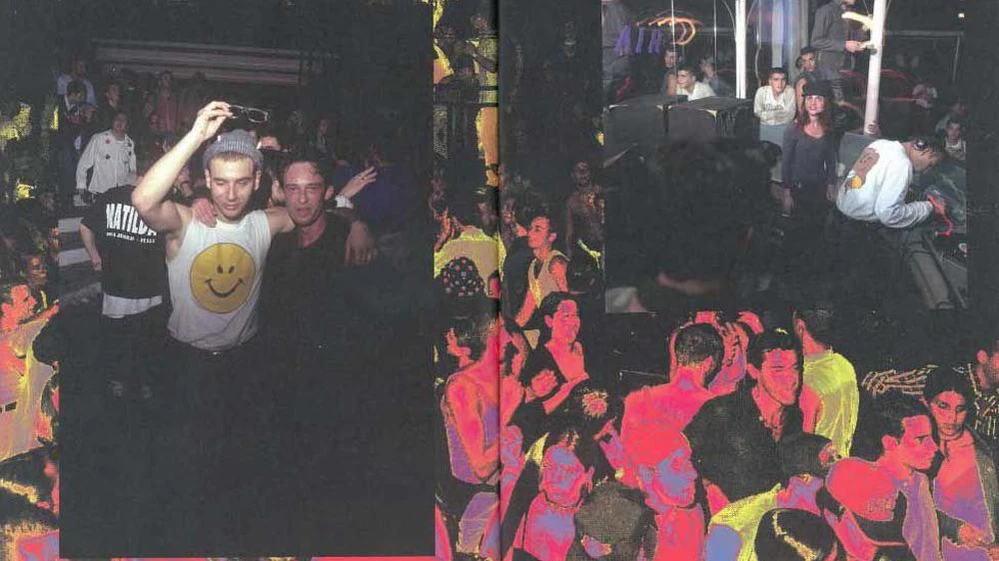










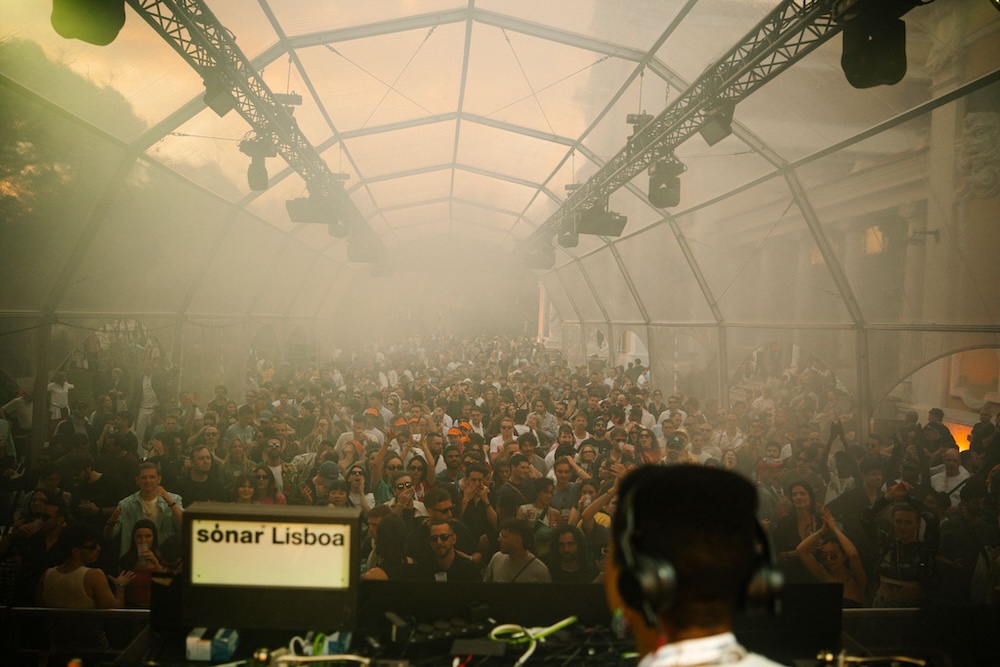
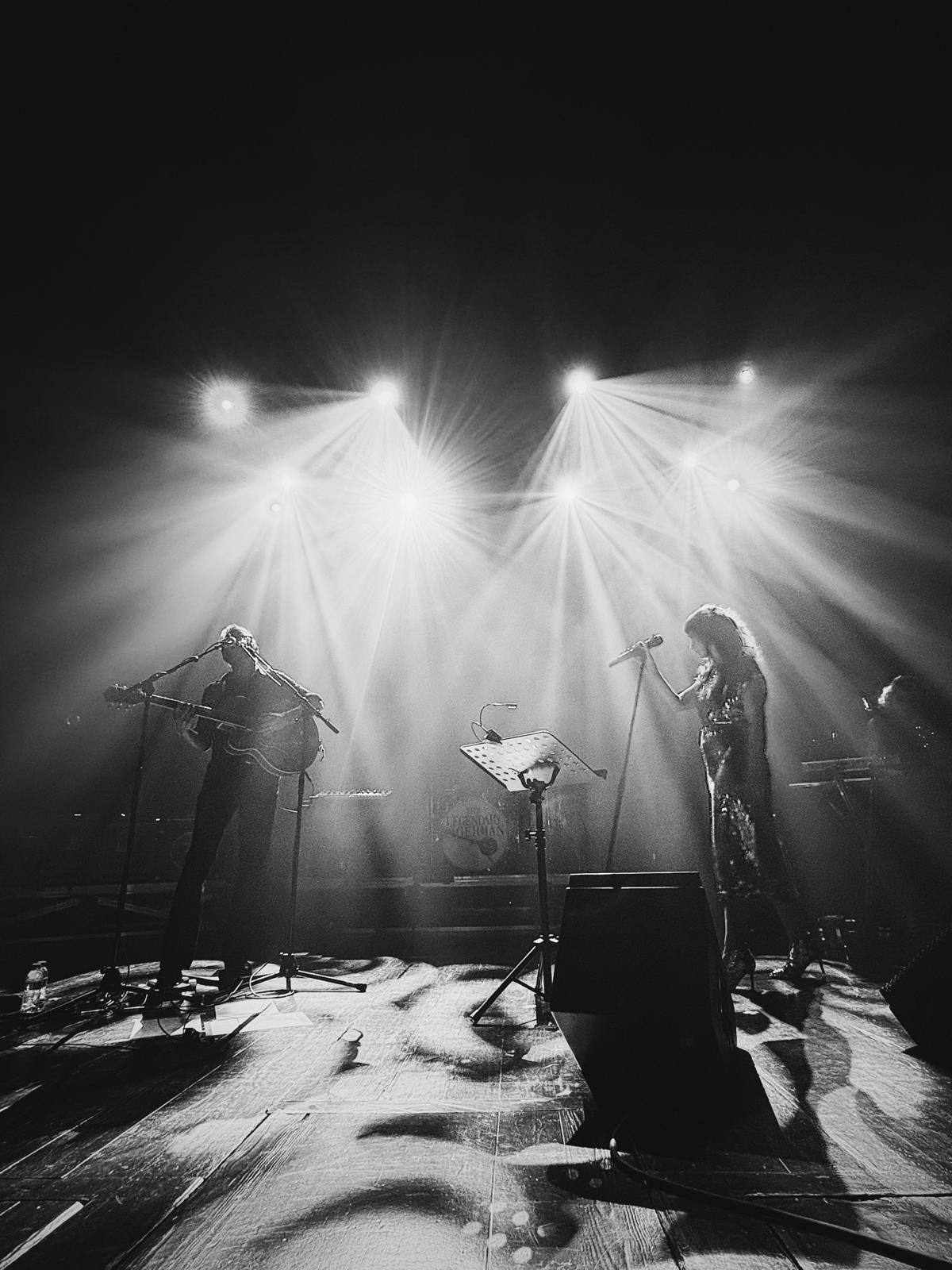




Must Reads
David Holmes – Humanity As An Act Of Resistance in three chapters
As a nation, the Irish have always had a profound relationship with the people of Palestine
Rotterdam – A City which Bounces Back
The Dutch city is in a state of constant revival
Going Remote.
Home swapping as a lifestyle choice
Trending track
Vels d’Èter
Glass Isle
Shop NowDreaming
Timothy Clerkin
Shop Now